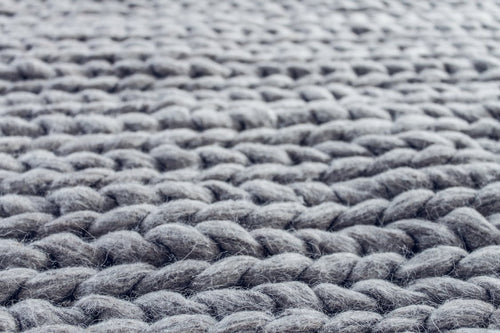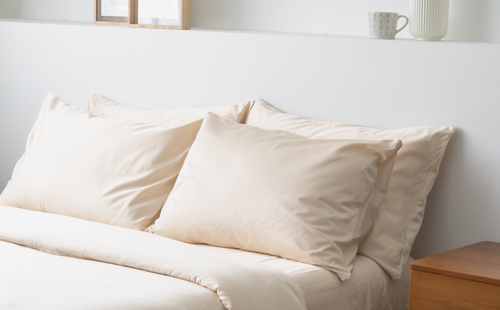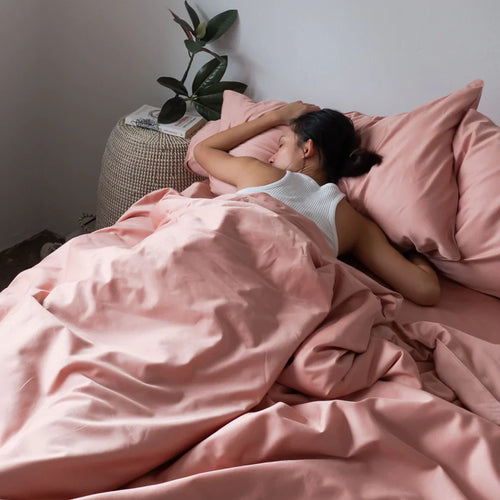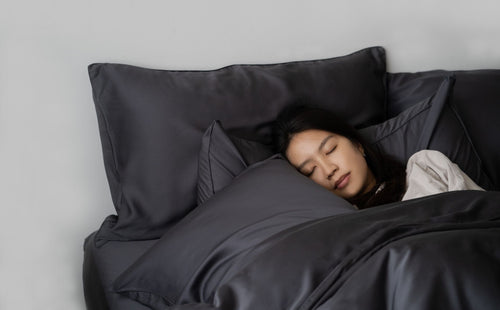
Image by Isabelle Taylor from Pexels
In evaluating bed sheet quality, density (weight and/or length of the yarn) plus softness or feel (thread) of the fabric go hand-in-hand. This is why when buying a new sheet set, you’ll often encounter textile measurement terms such as thread count and yarn count. The former is undeniably more popular. In fact, when you do a quick Google search about “yarn count for bed sheets”, you’ll be presented with thread count-related results! Many people sought high thread count bed sheets as they are deemed to have better quality.
But what about yarn count? Though less familiar, it is actually one of the factors that determine the thickness of fabrics. In this article, we’ll unravel cotton yarn count and how it affects the bed sheet quality.
What Is Yarn Count?
We already know that yarn is made by twisting together several strands of fibers. These are made into a continuous length of interlocked fibers in a process called spinning. Oftentimes, they refer to extended lengths of intertwined fibers. These yarns are then woven and knitted into fabrics.

Image by Castorly Stock from Pexels
The material’s fineness or coarseness is expressed numerically by the yarn count. One of the main specifications of cotton yarn, this measurement conveys the thickness or thinness of the filament. In other words, it determines whether the yarn is thick or thin. It also determines the relationship between the yarn’s length and weight. In technical terms, it is the mass per unit length or length per unit mass of the yarn.
Why Is Yarn Count Important?

Image by Teona Swift from Pexels
It has been found that a system of numbering the various yarn sizes must be adopted throughout all of the textile industry's branches. This custom is practiced in order to distinguish different yarns according to thickness.
Moreover, it partly serves an essential function in facilitating calculations when the weight has to be taken into account in the process of manufacture. From a consumer’s standpoint, it helps determine the coarseness of the material, making it a key factor in choosing a bedsheet in Singapore.
Yarn Count Vs. Thread Count: The Differences And Relationship

Image by Teona Swift from Pexels
As mentioned, density (yarn count) and softness (bed sheet thread count) both matter when picking the perfect sheets for you. Thread count refers to the number of threads that could fit in a square inch of fabric. And yarn count can directly influence that depending on the thickness of the strand.
Finer threads that are packed tightly together result in a softer and smoother fabric. Threads are made by weaving or knitting fibers together, and subsequently, yarn is made by continuously twisting those threads, of both natural and synthetic fibers, in staple or filament form.
Despite the importance of thread count in a piece of fabric, it’s not the only factor that influences the quality of your bedding. How thick the yarn is and how it is spun are also essential.
How Yarn Count Can Affect Your Bed Sheets

Featuring Weavve’s Signature Cotton Fitted Sheet in Tea Rose
The yarn has to be produced before bedding sets or any textile can be made. The quality of a sheet depends on its yarn count, which is a numerical value that tells you how fine or coarse the yarn is.
In technical terms, it's the value of the linear density (the diameter) to which that yarn was spun. When helping you lull into a deep sleep, this is one of the numbers that will matter.
Types Of Yarn Count Suitable For Bed Sheets
There are different systems for expressing yarn fineness, depending on the material and region:
Direct Count System
Under this system, there is a fixed unit length of the yarn. The direct count is commonly used for filament yarns that comprise polyester, silk, and other synthetic fibers expressed in Tex and Denier units.
To understand this, imagine you have two yarns both of the same lengths. In order to compare the yarn count of each, we take a look at the weight. So if yarn 1 weighs 15 grams, the weight of 1000 meters of that yarn is equal to 15 Tex. Note that Tex refers to the weight of 1000m of yarn. If yarn 2 weighs 20 grams, that makes it 20 Tex and implies that it’s coarser than yarn 1. We can also say that yarn 1 is finer than yarn 2.
Indirect Count

Featuring Weavve’s Cotton Deluxe Set in Midnight Blue
For this type of system, the same rule applies but this time, it is the weight that is constant. That means the length of a yarn’s fixed weight is measured. It is commonly expressed in English (or cotton count), Metric, and Worsted units and used for spun yarn like rayon and cotton bed sheets.
The number of 840-yard strands that make up one pound is known as the cotton count. This indicates that 840 yards of yarn, each weighing one pound, was needed. For instance, 30-count yarn requires 30 yarns totaling 840 yards in order to weigh one pound.
As the count in the indirect system increases, the yarn becomes finer. This is in contrast with the direct system wherein a higher yarn count means coarser texture.
Is A Higher Yarn Count Better?
As previously mentioned, higher counts mean thinner yarns in the cotton count or indirect yarn numbering system. For instance, an 80’s yarn has twice the fineness of a 40’s yarn.
|
Weave |
Thread Size |
Notable Features |
|
|
Higher yarn count |
More tightly woven yarn |
Thinner threads |
Lightweight, softer and smoother |
|
Lower yarn count |
More loosely woven yarn |
Thicker threads |
Durable, heavier fabric |
Typically, the higher the yarn count, the nicer the fabric is. An ideal base number is somewhere in the 100s. Anything over 140 is already ultra-soft and signals that the fabric is two-ply. Manufacturers may sometimes bump it up to 200 for a finer feel. Just be sure to look into the yarn quality as well ‘cause this could mean weaker fabric structure.
Note that high yarn count can only give maximum standard if yarns are of equally premium quality. Holding bedsheets up to a light source is an excellent technique to test their yarn count; the less light that passes through the fabric, the higher it is.
Discover Weavve’s Bed Sheets
Weavve’s TENCEL™ Lyocell Sheets

Featuring Weavve’s TENCEL™ Deluxe Set in Mist Grey
Derived from the best 100% TENCEL™ branded Lyocell fibers, our TENCEL™ bed sheets are well known for their naturally silky smooth and cooling fabric. Another reason to love them is their eco-friendly and impressive temperature-regulating properties.
Shop TENCEL™ bedsheets Singapore
Weavve’s Cotton Sateen Sheets

Featuring Weavve’s Cotton Classic Set in Sandshell
Starting with extra-long staple cotton fibers, our cotton sheets use finer threads (100 yarn count), resulting in luxuriously smoother, stronger, and lighter sheets. If you’re looking for a bed sheet set with a high thread count in Singapore, you’ve come to the right place. Weavve utilizes single-ply threads woven into an honest 600 thread count. We also follow a sateen weave method to give that buttery soft feel with a subtle sheen.






































